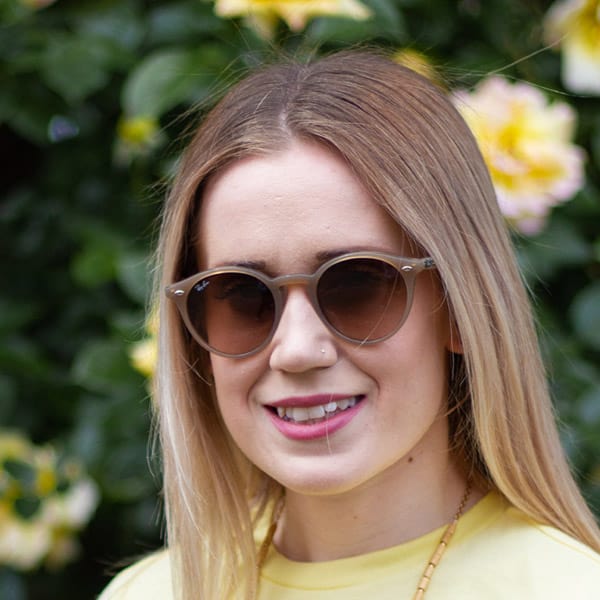Alice’s story
I first experienced problems with my sight at 22, when I was in the middle of a degree in Vocal Studies at the Royal Northern College of Music. I had noticed problems finding my friends in busy places and had a few scary moments when driving, so I went for a routine eye test, thinking that I would come away needing glasses.
As a child, I had regular sight tests and whilst I sometimes struggled seeing the board at school and preferred the lights on inside, I never noticed any real problems or needed glasses. I was an avid reader as a child, sight-read music fluently and learnt to drive. This all meant that it was a shock at age 23 to be diagnosed with a ‘macular dystrophy’. At 24, I had genetic confirmation of Stargardt’s Disease. At this point I could see a small missing patch in the centre of one eye.
In the first few years since being diagnosed, my sight deteriorated gradually and I now have a solid missing central patch of vision in both eyes. However recently, I have been told that my vision loss has stabilised and may not get much worse. I sometimes describe that my vision is a bit like putting an invisibility cloak from Harry Potter over the centre of my sight! If somebody is standing a metre in front of me, if I look at their head, they have no head at all. Over the top of the missing patch there are flashing lights spinning around. I use my peripheral vision to see. Peripheral vision does not have the same detail or accuracy as central vision and using it can really tire your eyes out. Stargardt’s also means I am very sensitive to light so I have to wear sunglasses outside.
Stargardt’s has affected my life in lots of ways. I had to give up driving, which I found upsetting at first. After years of not reading, I now use a Kindle to read books and magazines, as it can have extra large font (I need the equivalent of size 48 font.) I don’t know who people are when I see them in the street, as I can’t see their faces! But I recognise people now from their voice and their clothes and the way they walk. Sometimes this can be embarrassing but I’ve got used to it.
I have found it empowering to explain my needs and to ask for help. I use a white symbol cane when I am in a busy place on my own, such as the tube. To get around locally to familiar places, I use a push scooter and this helps me to feel more independent and to get around a little quicker than walking!
Stargardt’s has also affected me in lots of good ways – I have had funding for singing lessons and training courses to help me in my work and performance opportunities, such as singing at the Queen’s Gallery for the RNIB.
For work, I run my own business with my husband and a friend. Our company is called Sing Education and we source and train music teachers and develop teaching resources. Our aim is to enable children to encounter the transformative power of music in their lives, by experiencing the joy of singing and making music collectively at school. I love running my own business but it does have its added challenges for someone with sight loss. My iPhone, iPad and MacBook are my main assistance – I would really struggle without them! When I’m working in school, I have to make sure I am extra prepared so that I can see what I need. I do find it hard seeing children’s faces but I try to work around it. I’m unable to read normal printed music now but I can use my iPad to enlarge it and this helps, but it is a much slower process. I also teach singing and sing regularly as a soloist, in a Gospel choir and at my church. I have recently begun working with visually impaired children, which is a real joy!
I have an Instagram page @life_as_a_vip which I aim to use to educate and to spread awareness of the spectrum of sight loss and to change preconceptions of what blind and partially sighted people achieve and what they look like. I am passionate about changing attitudes towards sight loss and accessibility.
You wouldn’t know to look at me that there is anything wrong with my eyes, yet every day I experience something I can’t access due to my sight loss. I am looking forward to doing some fundraising with Stargardt’s Connected. Together, we can empower and support one another, improve accessibility, raise awareness of Stargardt’s Disease and one day, find a cure!

